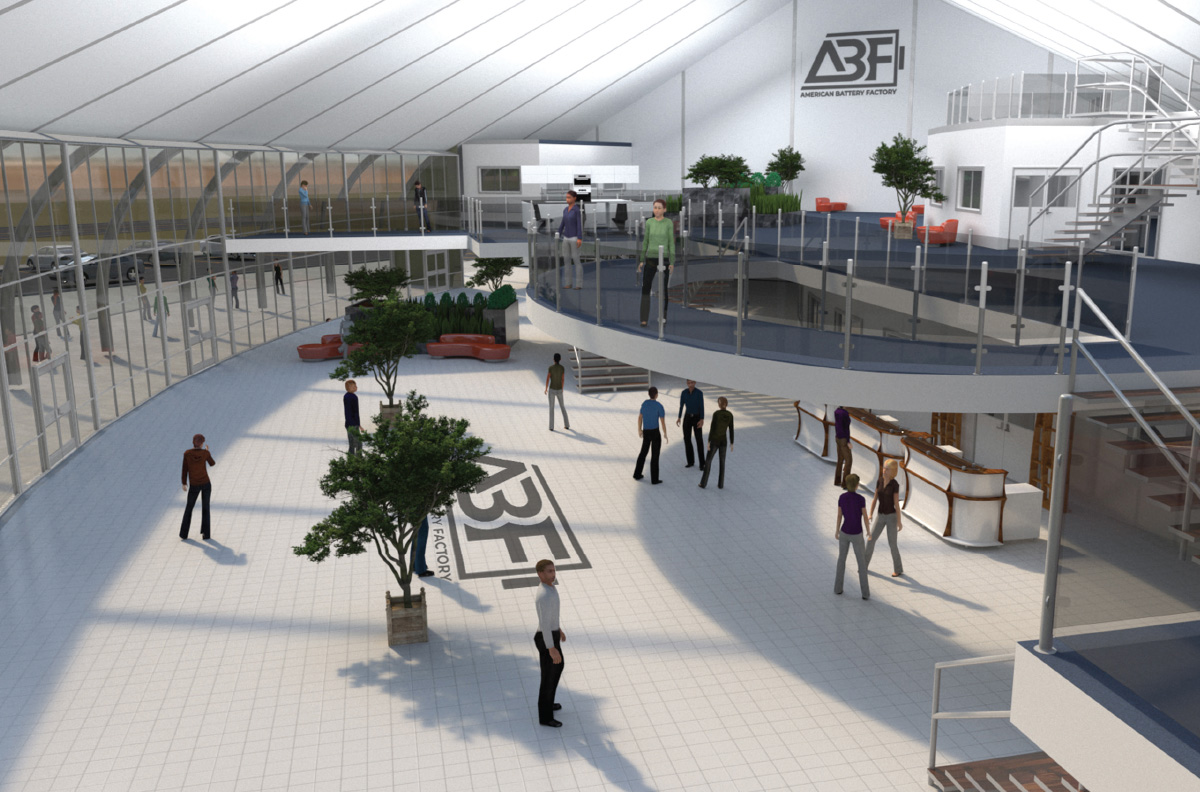
American Battery Factory Breaks Ground
Historic $1.2 Billion Investment
By Jay Gonzales
A groundbreaking is exactly what it implies. It’s the first step in the construction of a new building or sometimes the building of a new company.
When American Battery Factory broke ground on its new Tucson headquarters in October, local business, government and economic development leaders expressed hope that it’s a giant leap toward a whole new industry in Southern Arizona that will accelerate the growth of the clean energy economy nationwide.
“Today’s groundbreaking is further proof that when ABF announced its historic $1.2 billion investment last December, they joined a rapidly growing list of battery expansions happening in Arizona,” Arizona Gov. Katie Hobbs said at the groundbreaking ceremony on Oct. 26. “Since 2021, we’ve had nine battery announcements in the state, including three right here in southern Arizona.
“Not only does American Battery Factory’s new 2-million-square-foot gigafactory represent a massive investment and hundreds of high-paying jobs for Arizonans, this transformational investment will accelerate the growth of the clean energy sector in our state and across the country.”
ABF, founded in Utah, announced in December 2022 that it was going to headquarter in Tucson with the billion-dollar “gigafactory” that will be located on 267 acres of Pima County-owned land at the Aerospace Research Campus south of Tucson International Airport and adjacent to Raytheon Missiles & Defense. The company estimates the facility will have a $3.1 billion impact on the economy.
Construction of the facility will be a modular approach which will speed up construction. The first phase of construction to include the company’s headquarters, a research and development center and the initial factory module is expected to be completed by 2025. Using cutting-edge construction technology, the building will greatly limit waste at the site, will be airtight, and will ensure the protection of the battery cells during production, ABF said in a news release.
The first phase of the project, which will have a 3-gigawatt production line, is expected to generate 300 jobs. The company said it expects to ramp up to more than 1,000 jobs in operations, production, research and development, automation, robotics and its executives.
ABF President John Kem said an important aspect of the initial phase is that it will include a facility where technologies that are being developed in labs can be brought to the factory to determine if they can translate into a manufacturing process.
“The reality is sometimes it works in a test tube but it doesn’t work in manufacturing,” Kem said. “We’re going to have a facility that allows us to take what someone has invented and go, ‘How do you practically produce something with it, bigger than the lab?’ This is the start of that and we’re excited to be part of it.”
Kem, a retired U.S. Army major general, said it’s time for advanced battery and storage technology to be developed in the United States. It’s an emerging industry as the use of electric vehicles and solar expands creating a need for battery and storage technology.
“It has the opportunity and the potential to be transformative in many ways,” Kem said at the groundbreaking. “We’re all very familiar with the last decade in the evolution of electric vehicles, solar panels, a mix of all related efforts. Many use the term ‘green revolution.’
“While U.S. firms have played a part, it hasn’t been a big enough part. In many cases, a lot of the work has been done overseas with just some of the final assembly done in the U.S. Unfortunately, that’s just the nature of how it’s been. This is an opportunity to change that.”
Joe Snell, president & CEO of Sun Corridor Inc., the region’s economic development arm, said it was a no-brainer for the region to go after ABF when the opportunity arose. Project partners included Gov. Hobbs, the Arizona Commerce Authority, Sun Corridor Inc., Pima County, City of Tucson, Pima Community College and Tucson Electric Power.
“Back then it took us about a microsecond to understand that we wanted, that we needed to be the home of this cutting-edge gigafactory,” Snell said. “We can see where things are going across the globe. We were aware of how competitive the process was, and we knew we needed to earn it.”
Pictured above – Renderings of the ABF gigafactory





